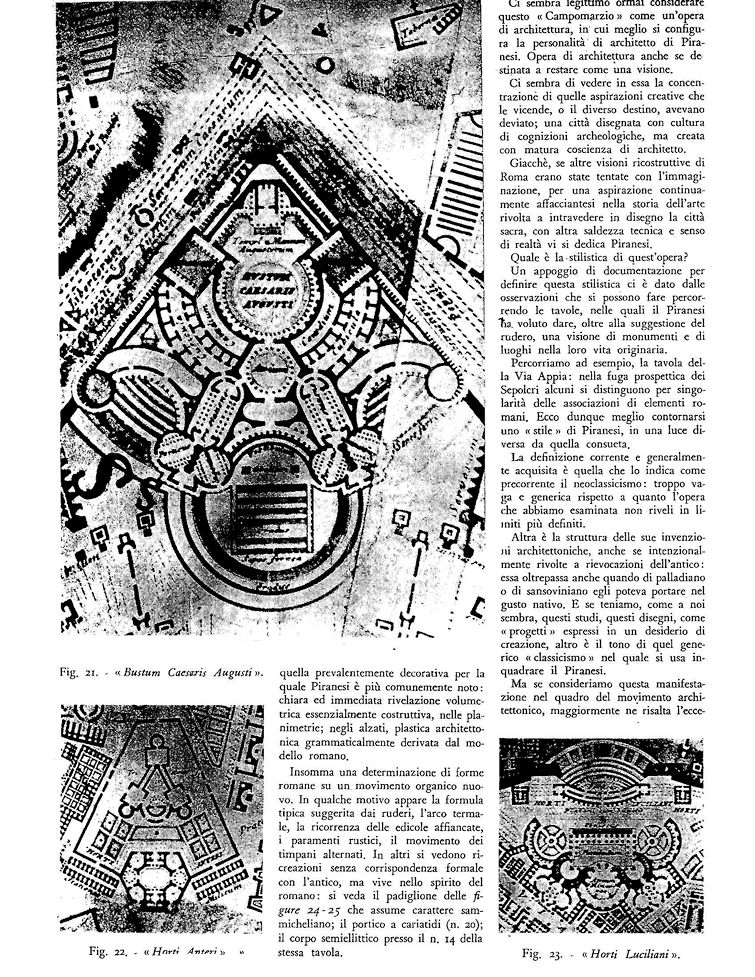
| |
In short, a determination of Roman forms in an organic direction which is new. In some of the motifs there appears the typical formula suggested by ruins: the arches of the baths, the recurrence of flanked aedicules, the rustic decorations, the movement of alternating tympanums. In others one can see re-creations that have no formal correspondence to the antique, but are alive with the Roman spirit, which assumes a sanmicheliano character: the portico with caryatids [in front of the Pantheon].
It seems by now legitimate to consider this "Campomarzio" as a work of architecture, in which the architectural personality of Piranesi more clearly takes shape. A work of architecture even if destined to remain a vision.
We seem to discern in this work the concentration of those aspirations which events, or a different destiny, had deviated; a city designed with the erudition of archeological knowledge, but created with the mature conscience of an architect.
So that, if other re-constructive visions of Rome had been attempted with the imagination, in order to feed that desire to glimpse the sacred city through drawing which continually reappears in the history of art, it is a different technical resolution and sense of reality that Piranesi dedicates to his task.
What are the stylistics of this work?
Some documentary support in defining the stylistics is given to us by the observations that can be made in examining the plates, in which Piranesi wanted to give, beyond the suggestion of the ruin, a vision of monuments and places in their original life.
For example, let us go through the plate of the Appian Way: in the perspective view of the Sepulchers, some are distinguished in their peculiarity use of Roman elements. Here then the "style" of Piranesi is more clearly defined, and in a different light than the usual one.
The current and generally acquired definition is the one that names him as a precursor to neoclassicism: too vague and generic with respect to how much the work we have just examined reveals under more defined limits.
The structure of his architectural inventions lies elsewhere, even if they are addressed to evocations of the antique: it goes beyond anything from the Palladian or Sansovinian [language] that he could bring from his native inclinations.
And if we claim, as it seems to us, these studies and these designs, as being "projects" expressed in a desire for creation, very different then is the tone of that generic "classicism" in which Piranesi is usually inserted.
But if we consider this manifestation in the context of architectural movements, its exceptionality stands out all the more. The departure from the direction represented by Galilei, by Fuga, by Salvi, by Vanvitelli is, after all we have seen, evident. The Piranesi of the "Candelabri" and the "Camini" is found again, it is true, in the project for S. Maria del Priorato, but it is a different force expressed in the creation of the Campomarzio. If its base lies in the Roman character, the organic liberties which we have seen in the organisms of the "Campomarzio" bring us back, we dare say, to baroque attitudes, Borrominian in some its aspects, considering the relish for intersecting planes and volumes.
|
